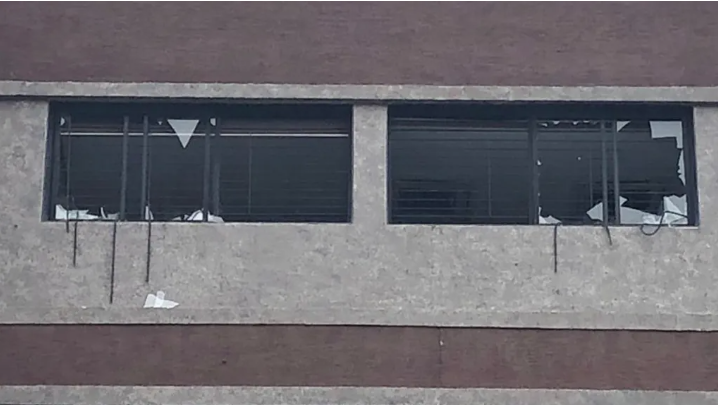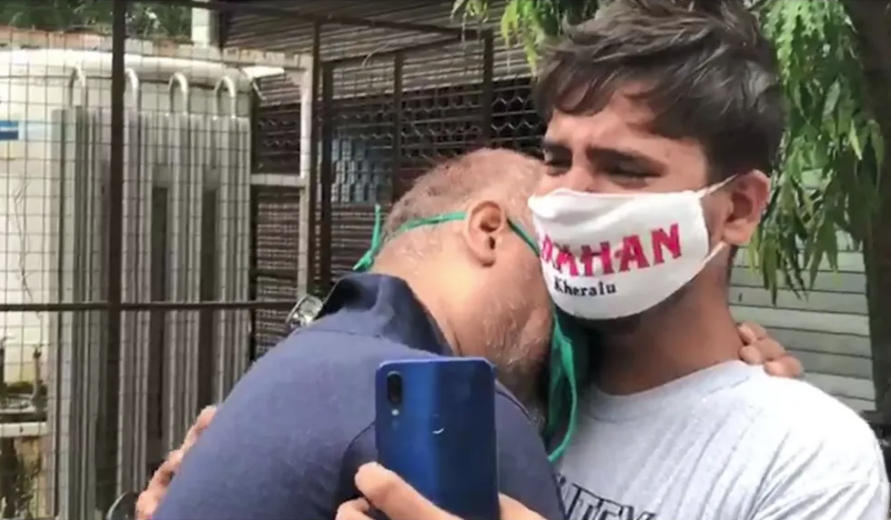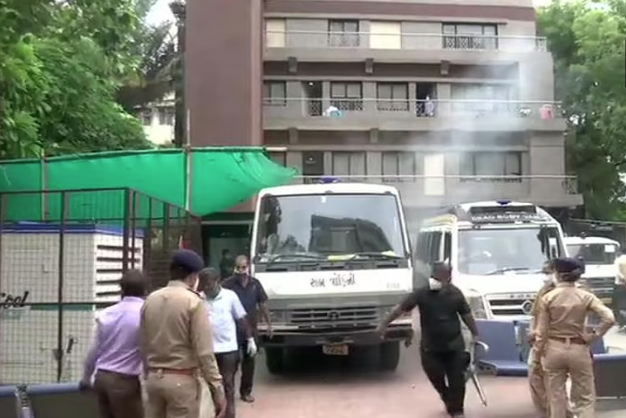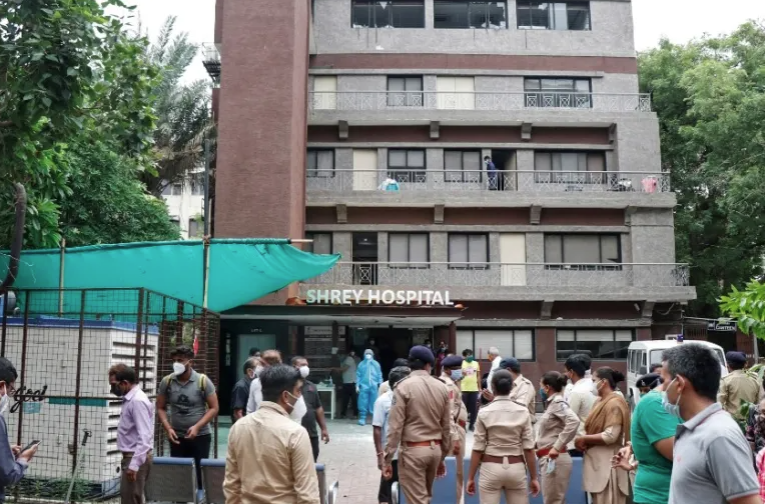📅 Date & Location
- Date: 6 August 2020 (around 3:15 AM)
- Location: Shrey Hospital, Navrangpura, Ahmedabad, Gujarat
- Facility: Private COVID-19 designated hospital
🕯 What Happened?
- A devastating fire broke out in the ICU ward on the top floor of Shrey Hospital, which was treating COVID-19 patients.
- The fire started in the ICU’s air-conditioning unit due to a suspected short circuit, spreading rapidly because of plastic and combustible medical materials.
- There were 10 patients in the ICU at the time of the incident; 8 patients (five men, three women) lost their lives on the spot, most dying of smoke inhalation.
- The remaining two patients were rescued by nurses and fire personnel.
- About 35 other patients in lower floors were evacuated as flames and smoke spread through the building.
- The tragedy occurred in the midst of India’s COVID crisis, when hospitals were already overcrowded and safety protocols stretched thin.
🔍 Mistakes / What Went Wrong
- Electrical short circuit in AC unit – no automatic cutoff or maintenance check.
- Flammable ICU interiors: oxygen-rich environment, plastic partitions, and foam mattresses accelerated fire spread.
- No smoke detectors or automatic sprinklers in the ICU – violation of safety norms.
- Improper emergency exits – only one staircase, no external escape path.
- Delayed fire alert – smoke alarms didn’t trigger, hospital staff manually raised alarm.
- Poor staff training: initial response lacked coordination.
- Oxygen supply lines worsened combustion when leaked during the blaze.
⚖ Hidden / Less-Mentioned Truths
- ICU fires in India’s hospitals have occurred repeatedly due to poor electrical safety, but few reforms followed.
- Fire officials later confirmed no functional fire NOC at Shrey Hospital at the time of the tragedy.
- No mock drills or emergency plans existed, despite being a COVID facility with 50+ beds.
- Most victims were on ventilators, unable to move or escape on their own.
- This was not an isolated incident — Gujarat saw multiple hospital fires within a year (Rajkot, Bharuch).
🧯 How Could It Have Been Prevented?
- Mandatory fire safety systems in every hospital: sprinklers, detectors, alarms.
- Regular maintenance of electrical circuits and AC units under certified engineers.
- Compartmentalization: fire-resistant ICU enclosures with automatic oxygen isolation valves.
- 24×7 fire audit logs and CCTV-monitored emergency response.
- Trained medical and non-medical staff on fire evacuation.
- Separate emergency staircases for ICU and high-risk wards.
- Periodic fire drills even during pandemic conditions.
- Dedicated fire extinguishers & blankets (LSB) near every ICU bed.
🛡 Survival Guide (If You’re in a Hospital Fire)
- Stay calm and assist others — panic spreads faster than flames.
- Cover your mouth and nose with a wet cloth to prevent smoke inhalation.
- Move away from oxygen cylinders and medical equipment.
- If mobile, move toward staircases, not elevators.
- Unplug electrical equipment if accessible and safe.
- If trapped, seal door gaps with wet towels or sheets to block smoke.
- Shout or flash phone light from window for rescue.
- Medical staff should immediately shut oxygen supply lines to prevent flare-ups.
- Memorize emergency exits every time you visit or are admitted.
- Always keep your hospital bed area clutter-free for quick evacuation.
📊 Data / Stats Box
- Deaths: 8 patients (ICU)
- Injured / Rescued: 2 in ICU; 35+ evacuated safely
- Cause: Short circuit in ICU AC unit
- Ward affected: COVID-19 ICU (top floor)
- Facility: 50-bed hospital
- Firefighting units: 6 fire tenders; blaze controlled within 45 minutes
- Legal follow-up: FIR registered; hospital director arrested; Gujarat CM announced ₹4 lakh ex-gratia per victim
📽 Visuals




🙏 Voices / Human Angle
- A nurse who survived said: “We heard a blast and then everything went black. We tried to pull patients out, but the smoke was unbearable.”
- Families of victims waited outside the hospital for hours without updates.
- CM Vijay Rupani visited the site, announcing a judicial probe and compensation.
- For many, the tragedy symbolized how safety took a back seat amid the pandemic chaos.
📢 Systemic Lessons
- Hospitals must be treated as high-risk fire zones, especially ICUs.
- Fire audits should be publicly transparent and renewed every six months.
- Biomedical and electrical safety teams should function independently from management.
- COVID-era emergency setups exposed weak enforcement of fire codes.
- Centralized registry of hospital fires is needed to identify repeat lapses.
- Life safety must never be sacrificed for speed or profit.
💡 What You Can Do Today
✅ Ask hospitals you visit if they have valid fire NOC.
✅ Check if oxygen lines and power boards are properly installed.
✅ Demand fire drills and safety signage in hospitals.
✅ Support volunteer awareness campaigns on hospital fire safety.
✅ Share this case study to help prevent the next ICU tragedy.
📌 Tags
#AhmedabadFire #ShreyHospital #HospitalFire #COVID19Tragedy #HowToSurvive #NeverForget
🔚 Closing Line
“In a ward built to save lives, eight were lost to a spark. Fire safety isn’t a checklist — it’s a lifeline. Every hospital must be a fortress of safety, not a trap of negligence.”

